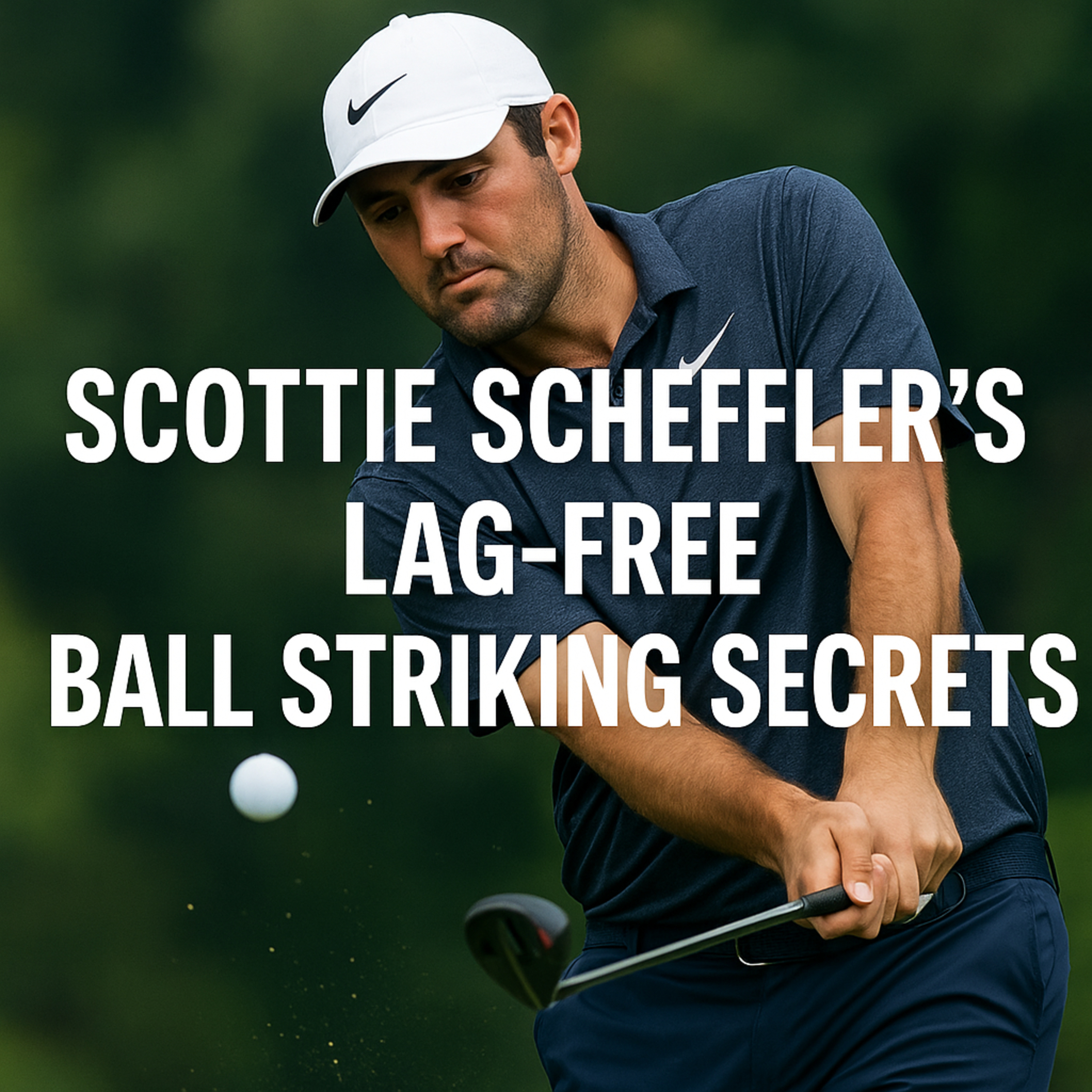#296 Scottie Scheffler’s Lag-Free Ball Striking Secrets
- Author
- Golf247.eu
- Published
- Sat 26 Jul 2025
- Episode Link
- https://podcasters.spotify.com/pod/show/puttin-pro/episodes/296-Scottie-Schefflers-Lag-Free-Ball-Striking-Secrets-e3614f9
By Henrik Jentsch – Director of Golf Academy 360°, powered by eCoach360°
For decades, golf instruction has preached the importance of lag—a deep angle between the lead arm and shaft during the downswing. Lag was seen as essential for power, compression, and elite ball striking.
Scottie Scheffler breaks that rule.
With almost no visible lag and a wide, flat downswing arc, Scheffler produces some of the most consistent and powerful ball striking on the PGA Tour. How? The answer lies in two key biomechanical moves—both measurable using eCOACH360° 3D motion analysis.
1. Aggressive Lateral Lower Body Shift
Scheffler shifts his knees and hips aggressively toward the target, generating 4 to 6 inches of lateral movement—sometimes even more. This motion is critical for positioning the hands ahead of the clubhead at impact, creating shaft lean, compression, and low-point control without traditional lag.
Amateurs who stay centered with wide, shallow downswings tend to hit behind the ball, catch it thin, or launch it too high. The lateral shift counters that. Data from eCOACH360° confirms this move as a common trait among elite ball strikers.
2. Forward Oblique Rib Tilt
The second move is more subtle but equally powerful. During the transition, Scheffler’s upper body tilts forward—not backward or straight down. This forward oblique tilt aligns his torso toward the target while preserving posture and rotation.
Most amateurs either stay centered or tilt their ribs down toward the trail foot, which disrupts shaft lean and body angles. In contrast, elite players like Scheffler and Ben Hogan create this forward tilt, allowing them to rotate and compress the ball with precision.
A New Model for Efficient Swings
Scheffler’s swing shows that efficiency beats aesthetics. While traditional instruction values sharp lag angles, his success proves that players with wide downswings can still achieve elite results—if the lower and upper body move in sync.
Think of it like this: Traditional lag is a whip crack—sudden and sharp. Scheffler’s motion is more like a synchronized wave—broad, fluid, and perfectly timed to deliver force through the ball.
Practical Application with eCoach360°
These moves are not theoretical—they're measurable. With eCoach360°, golfers can track rib tilt, lateral motion, shaft lean, and low point control. Using avatar visuals and side-by-side Tour comparisons, players can learn how their body moves and what needs to change.
We’ve seen immediate improvements in players who stop chasing lag and instead focus on:
Shifting their lower body 4–6 inches toward the target
Creating forward rib tilt in transition
Holding posture through the strike
This model is especially powerful for amateur golfers who struggle with fat or thin shots. Scheffler’s approach shows there’s a more natural, more functional path to great ball striking.Final Thought
Not every golfer needs to swing like Sergio Garcia. But every golfer can learn from Scottie Scheffler.
His swing proves that traditional lag is optional—but efficient movement is not.
